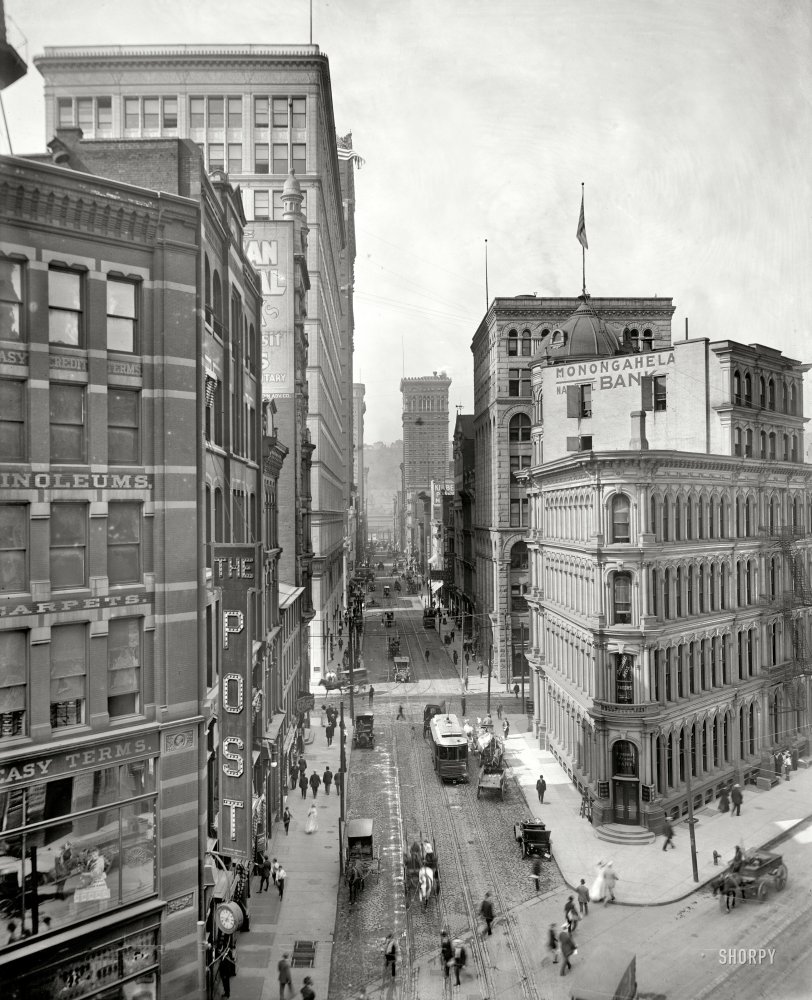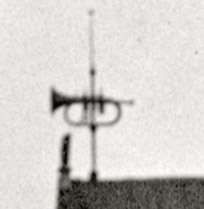


Framed or unframed, desk size to sofa size, printed by us in Arizona and Alabama since 2007. Explore now.
Shorpy is funded by you. Patreon contributors get an ad-free experience.
Learn more.

- Baldwin 62303
- Baldwin VO-1000
- Cold
- No expense spared
- Tough Guys
- Lost in Toyland
- And without gloves
- If I were a blindfolded time traveler
- Smoke Consumer Also Cooks
- Oh that stove!
- Possibly still there?
- What?!?
- $100 Reward
- Freeze Frame
- Texas Flyer wanted
- Just a Year Too Soon
- WWII -- Replacing men with women at the railroad crossing.
- Yes, Icing
- You kids drive me nuts!
- NOT An Easy Job
- I wonder
- Just add window boxes
- Icing Platform?
- Indiana Harbor Belt abides
- Freezing haze
- Corrections (for those who care)
- C&NW at Nelson
- Fallen Flags
- A dangerous job made worse
- Water Stop
Print Emporium
Wood Street: 1910

Pittsburgh, Pennsylvania, circa 1910. "Wood Street from Liberty Avenue." 8x10 inch dry plate glass negative, Detroit Publishing Company. View full size.
Wagons in the Trolley Tracks
The gauge of Pittsburgh's trolley system was (and still is) 5 feet 2½ inches. Trolley companies were often required to pave the area of their tracks as part of the operating franchise arrangements with the cities and towns where they operated. It was an onerous responsibility and when they began losing money it was often a reason for abandonment or conversion to buses. All of Pittsburgh's downtown street trackage was abandoned in the mid-1980s when the subway was completed. The system once had more than 600 miles of tracks in and around the city. It's too bad more of the system wasn't saved as the tracks would once again be the smoothest part of some of our deplorably paved streets.
Ex-Post Factoid
I used to work in the Post Building, before we moved our office over to Penn Avenue. It's still there, as is the Granite Building (which is magnificent) on the same side just before the next intersection. The triangular building is now a subway station. The whole next block has been replaced, between Sixth and Oliver on Wood.
Riding the Rails
Check out how many horse-drawn vehicles have their wheels set at exactly the right gauge to ride the streetcar rails (or flangeways). The rails were by far the smoothest part of the street, and outside of the central business district were often part of the only paved area. This photo has just about the perfect angle to illustrate this "riding the rails" habit that the streetcar companies found so irritating.
The view hasn't changed too much
It's actually fairly the same these days.
Bugle
Perhaps because of it being a music store of some sort, look down where it says, "Hamilton Pianos."
"Hamilton Music"
From the street level sign, I'm guessing the store is closely related to the bugle rooftop weathervane. History Channel's American Pickers would just love to find that in some dusty Pennsylvania barn!
Rooftop reveille
Why is there a cornet (or bugle) atop that building on the right?

























On Shorpy:
Today’s Top 5